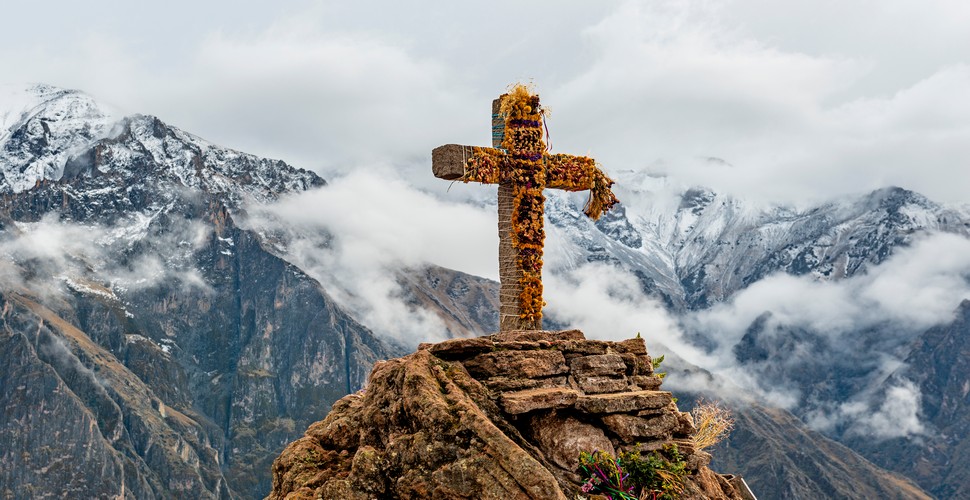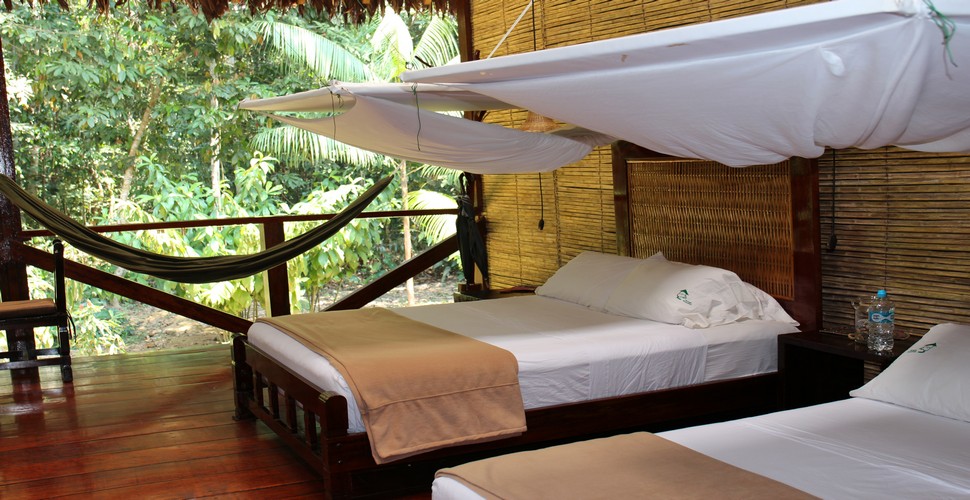

Claire Dean
Travel in South America is a joy to behold. The rich variety of destinations, experiences, landscapes and geography fascinated me so much, that I chose to relocate here, over 20 years ago! The best thing I ever did! Allow me to share my knowledge and passion for Central and South America with you and help you plan your holiday of a lifetime!

The Best of Magical Peru
Written by:Claire Dean
Published: 2022-08-22
The Best of Magical Peru could be the best Peru tour to see all of the most important sights in this incredible country. Lasting just over two weeks and carefully planned to be acclimatizing for the altitude, all along the way, this carefully planned itinerary has it all! From the bustling capital of Lima; The deepest canyon in the world at Colca; The capital of the Inca Empire, Cusco, the magnificent Machu Picchu; the highest navigable lake in the world, Titicaca, and the ecologically fascinating Amazon... all in 15 days! This tour has it all for your Peru vacation.
There is a reason why Peruvian people worship the “Pacha Mama” or Mother Earth, the endless number of natural phenomena make Peru one of the most diverse, stunning and naturally gifted destinations on the planet to visit. The incredibly dramatic mountains, the endless blue skies, and the natural glaciers only add the perfect backdrop to the incredible history and culture of this geographically diverse paradise. To make the most of your time in Peru and also see the most impressive and interesting destinations on your Peru vacation, here is a 15 day Best of magical Peru itinerary to help guide you along the way.
Santa Catalina Monastery, Arequipa
Lima the City of Kings.
Lima, the City of Kings, offers plenty to satisfy all tastes. Whether it’s the world-class food, nightlife, colonial-style architecture or surfing, this Peruvian gem provides something for everyone. The food is exquisite, and Lima is the only city with two restaurants ranking in the top 10 of the World’s 50 Best Restaurants, Central and Maido. The incredible array of national dishes, fusion dishes and international plates is incredible; however, when in Rome…you simply have to try the national dish of Ceviche and the other seafood dishes available.
The colonial architecture in the down area surrounding the Plaza de Armas will immerse you in the history of the City of Kings, where you will be transported back in time when this city was Spain’s capital of South America. To the east of the plaza resides the Palacio Arzobispal, which has ornate Moorish-style balconies unique to Peruvian architecture. In the northeast is Palacio de Gobierno, a grandiose Baroque-style building that serves as the residence of Peru’s president.
Most Peru vacations start and finish in the capital, Lima. Lima like any other capital city, is large and sprawling and you need to have your wits about you in certain areas, especially busy markets and on public transport. Most travelers head to Miraflores, Barranco, San Isidro and La Molina for the safer areas of Lima. Miraflores is the most touristic region with high security, all categories of hotels, amazing restaurants, and all the facilities of any South American City. For a more bohemian, artsy kind of experience, head to Barranco.
Lima Water Park
Arequipa
Take a flight to the stunning white city of Arequipa and adjust to the slightly higher elevation of 2000 Meters. Arequipa’s central Plaza de Armas, remains unblemished by modern interference, is in itself, a museum of the city’s architecture made of “Sillar” (volcanic rock). Its characteristic white, robust and aesthetically unique consistency, is why this city is locally known as the “white City” and is representative of the city of Arequipa. Impressive colonnaded balconies line three sides of the plaza and the 4th side is occupied by Peru’s largest cathedral, a humongous construction with two soaring bell towers. Even this is dwarfed by the dual snow-capped sentinels of the El Misti and Chanchani volcanoes, both of which are visible from various points in the central park of the plaza. This UNESCO World Heritage site has had its ups and downs and has survived a number of earthquakes over the years. The cathedral's towers have had to be rebuilt on a number of occasions; however, you wouldn’t know it unless you had been told. Just down the road is the famous Santa Catalina monastery which is a city within the city and is definitely worth a visit. Arequipa´s skyline is dominated by its volcanos. This is apparent in the walls of its streets, buildings, and churches. Arequipa is a place you won’t want to leave, thanks to its unique cuisine, its history, and its unique cordiality.
Plaza de Armas, Arequipa
Colca Canyon
Colca Canyon is found in the beautiful geography of the Arequipa region which has created a fertile valley and one of the world’s deepest canyons. Imagine enjoying the warm waters of a thermal pool as you look out towards green mountains crowned with magnificent snow-topped peaks. at the welcoming hot springs at the Calera. We will head out of Arequipa city to enjoy the drastically changing countryside of Peru in one of the world’s deepest canyons. Visit Condor Cross to see the enormous Andean Condor in its natural habitat, soar around you in its search for food or to spread its giant wings, the contrast of the lush green foliage near the bottom of the canyon, and the dry, rocky terrain near the peaks, as the elevation increases. The fascinating communities of local Colca people with their ancient traditions and dress will offer us a warm welcome! A trip to Colca is the perfect introduction to The Andes of Peru and what is to come next on this Magical Peru tour.
Condor Cross, Colca Canyon
Lake Titicaca
After spending the morning condor spotting, we take the bus from Colca to Puno, the home of the largest navigable lake in the world, Lake Titicaca. The stunning blue skies are only “out-blued” by the crisp deep indigo lake itself, which almost gives the impression of being on an ocean journey. The contrast of the bright, colorful, traditional dress of the locals is a marvel to see! Mystery and stunning altiplano await us on a trip to Lake Titicaca. Its magical waters are home to diverse Andean communities and a hot spot for some of Peru’s largest festivals.
Lake Titicaca is the world’s highest navigable lake and one of South America’s stunning natural wonders. The deep blue of the water seems to meld with the sky, and a ring of snow-tipped peaks creates the remarkable sensation of floating atop the earth’s highest elevations. Visit the impressive floating islands of Uros which are rebuilt constantly from the totora reeds that grow in the lake. It is like walking on sponge when you first step onto these unique floating islands. Then there are the male knitters on Taquile Island as you experience the different culture and customs of this awe-inspiring lake.
Hiking Taquile Island, Lake Titicaca
Cusco
Early we will take a bus tour to Cusco visiting a number of historical and archaeological sites along the way including the fabulous Andean village of Pukara, La Raya which marks the highest point and is the border between the Cusco and the Puno regions, the Wiracocha temple of Raqchi, and the Sistine Chapel of the Andes in Andahuaylillas, before arriving at the imperial city of Cusco.
Cusco is one of the world's most magical places, not just because of its proximity to Machu Picchu. The Imperial City of Cusco was the center of the Inca empire and known as the “bellybutton of the world”. Its rich and complex history dates back thousands of years and to this day the City remains an eclectic mix of the traditional and the modern full of history with a million and one stories to tell. Cusco city is built on Inca foundations which are still visible today and are the base of many modern buildings in the center. The historic city center is the Plaza de Armas which is home to the cathedral, the Jesuit church, and a thousand street sellers, selling tours, shoeshines, massages, and handicrafts. The surrounding ruins of Saqsaywaman, Quenqo, Puka Pukara and Tambomachay are a great day trip and Cusco is the launching spot for the Sacred Valley and of course Machu Picchu.
Travelers of any kind will undoubtedly find themselves sucked into this city's culture, food, and people. Situated in the Andes Mountains of Peru at 3,400 meters (11,000 feet) above sea level. Cusco is surrounded by beautiful hills and extends into a river basin known as the Sacred Valley of the Incas. The city has around 365,000 inhabitants, a majority of who are Mestizo and indigenous. Cusco City is located in southeastern Peru and nestled high in the mountains, making it the perfect starting point for tours and offering endless possibilities to explore the surroundings. Many travelers pay a visit to Cusco not only to marvel at its ancient Inca foundations and charming cobbled streets but also to start on trips into the majestic Andes, to see famous Inca ruins, and of course, to visit Machu Picchu.
Cusco Street
The Sacred Valley
A popular destination for tourists heading to Machu Picchu, the Sacred Valley is a lush green valley just 15km north of Cusco. The Incas used the valley as a highly prized site due to its rich, fertile agricultural lands. Inca ruins are now dotted throughout the valley, and the land has a very Peruvian feel, thanks to the many authentic villages and towns that populate the region. The valley’s rich history and culture make it a great place to acclimatize and prepare themselves for the Machu Picchu experience. The Sacred Valley boasts mysteries, Inca history, an uncountable number of ruins, stone terraces, and beautiful natural settings in the photogenic valley carved by the Urubamba River.
The Sacred valley apart from its stunning scenery is an incredibly fertile valley and such named by the Inca’s for this exact reason. Maras, Moray, Chinchero, Ollantaytambo and Pisac are the highlights of the Sacred Valley of the Incas. Most people take the train to Machu from Ollantaytambo, unless you are adventurous enough to take one of the amazing treks to the Inca citadel.
Machu Picchu is, of course, one of the main reasons that people visit Peru. This incomparable Inca site is not only an architectural masterpiece, but the geography of the site is mind-blowing also and just adds to the incredible mystery of why the Inca decided to build this monument here.
Pisaq Ruins
Machu Picchu
Next up is Peru´s main attraction by a long distance. You will start your adventure by taking a train to the town of Aguas Calientes which can be found nestled at the base of the magnificent Machu Picchu archaeological site. The train journey itself takes in some spectacular scenery as you ride through the Andean terrains and patchwork scenery of the sacred valley to this wonderful spa town with hot springs and a number of touristic facilities to help you prepare for your Machu Picchu visit the following day.
Surrounded by mountain peaks and 2,430 meters (7,970 ft) above sea level, the incredible Inca ruins in the sky are truly astonishing. Words cannot begin to describe Machu Picchu, making it even more important to see it yourself. This citadel in the clouds was abandoned only 100 years after being built, and Spanish invaders never found Machu Picchu. It was left to nature before being rediscovered by Hiram Bingham in 1911. A hidden city protected by the mountains and still wonderfully inaccessible other than by foot or train, Machu Picchu is now a New Seven Wonders of the World and a bucket-list item for the masses.
Machu Picchu
The Amazon Basin
Fly from Cusco to the Amazon and Puerto Maldonado, the jungle area of Cusco. Here many Eco-lodges are waiting to take you on 3 day Amazon trip and even longer if your time allows. Experience the mega diversity of the jungle region and see some of its native species including the red and blue macaws, Jaguars and caimans amongst other animal species.
The Tambopata National Reserve has 2748 square km of virgin Amazon rainforest in southeast Peru. With more than 230 species of plants and 160 mammal species, Tambopata receives its name from the main river that crosses it of the same name. This river was born in the Peruvian Altiplano, near the Bolivian border and empties into the National Reserve. Tambopata has incredible biodiversity in flora and fauna; it is also a refuge for many endangered species and other exotic wildlife. Not to mention being the home of indigenous communities that promote social tourism. It is one of the most visited areas in the Peruvian south jungle, offering a unique experience in the Amazon.
Posada Amazonas, Tambopata
After the Amazon, it´s a flight back to Lima for your onward flight home, safe in the knowledge that you have experienced the magnificent magical Peru to the full on this 15 Day vacation. This tour offers just enough time to experience all of the best parts of magical Peru. Book this incredible tour here!














